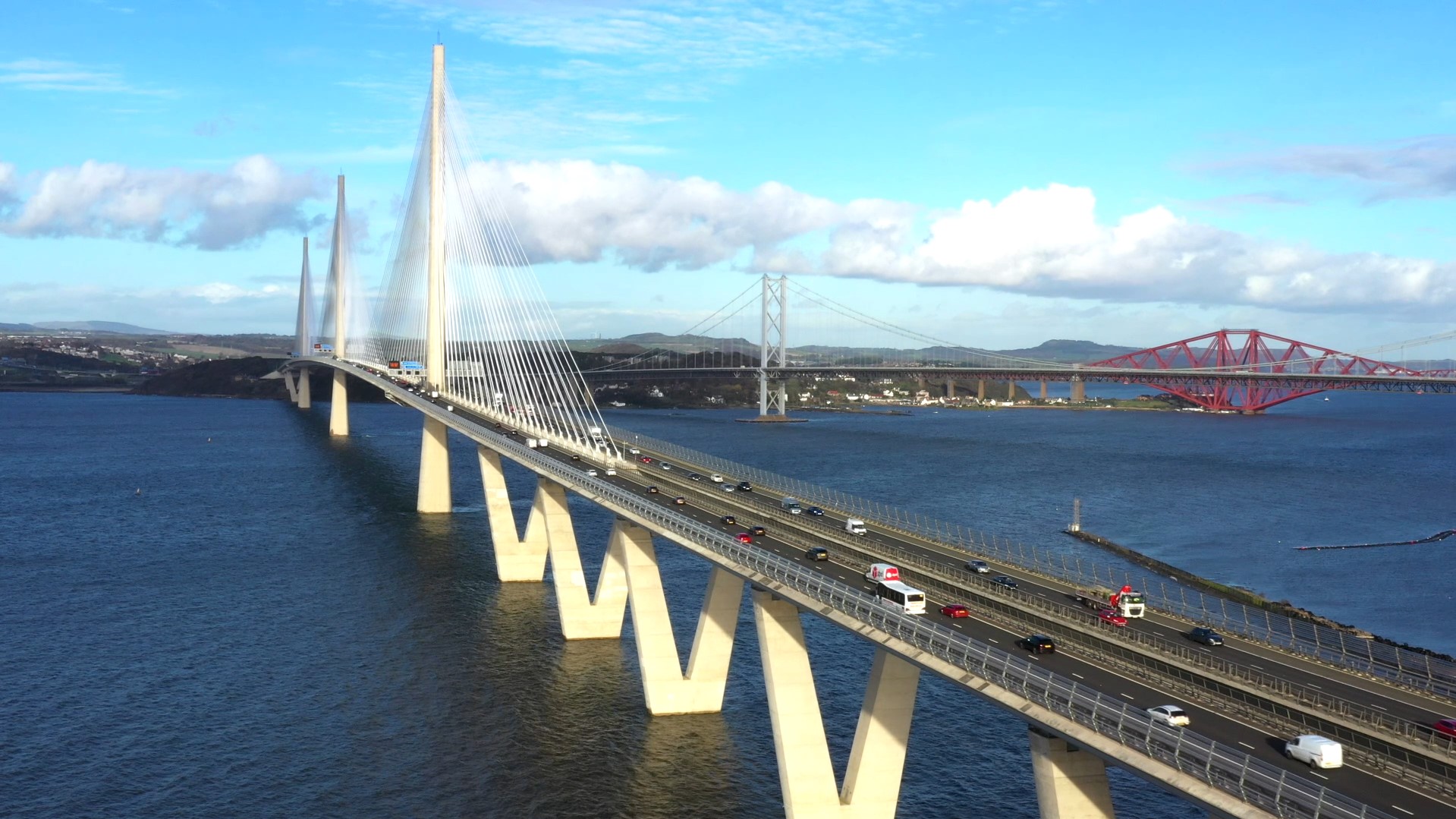

Engineers responsible for the Queensferry Crossing have expressed cautious optimism at the results of recent tests of methods to mitigate against ice accreting on the bridge’s cables and towers.
Laboratory tests have confirmed that cleaning the cables does have a beneficial effect, however the extent of this is yet to be quantified. Further testing and monitoring on site will be carried out over the months ahead.
The stay cables on the north tower of the Queensferry Crossing were cleaned between September and November 2021. The central and south towers were left uncleaned so that a comparison could be made over the winter period should any ice accretion occur. Since then, the early stages of ice accretion have been detected twice, however on both occasions conditions quickly improved and there was insufficient data to draw conclusions, as well as no risk to road users. There have been no further incidents of the conditions that previously required the bridge to be closed.
Cleaning of the cables was followed up in December by laboratory tests at the Jules Verne Climatic Wind Tunnel in Nantes, a specialised research facility which can replicate the specific combination of weather conditions that cause ice accretion to occur.
Cleaned, soiled, new and damaged sections of the high-density polyethylene pipes that encase the Queensferry Crossing’s cables were exposed to freezing temperatures, wind, sleet and snow inside a 6,000m2 wind tunnel. Tests were also carried out on cable pipes coated with specialist icephobic coatings, omniphobic coatings, and de-icing compounds, and on a mock-up section of the Queensferry Crossing’s concrete towers.
Cleaning was found to be the best performing option for mitigating the build-up of ice on the cables, and icephobic and omniphobic coatings were shown to reduce the build-up of ice on the concrete tower.
Chris Tracey is South East Unit Bridges Manager for BEAR Scotland, the operating company appointed by Transport Scotland to maintain the Queensferry Crossing. He explains: “We won’t know for sure until we experience another incident of ice accretion on the bridge itself, however these test results give cause for cautious optimism that cleaning may have a beneficial effect.
“Further tests are required to measure the extent of this effect under a wider range of conditions, and we will continue to monitor the cables closely on site.
“Tests of specialist coatings on the concrete tower also showed promising results, however further work is required to verify these results and to identify how these coatings might be used in practice.
“Ice accretion is not a problem unique to the Queensferry Crossing. Other major bridges around the world experience similar issues and we hope that the research and development carried out here will ultimately be of wider benefit.”
Cable cleaning machine
In autumn 2021 over 24 kilometres of cables on the north tower of the Queensferry Crossing were cleaned by hand, by rope access technicians abseiling from the tower top – a laborious process that took nearly nine weeks. Engineers have now designed a machine (pictured) that can be winched up and down the cables to clean them remotely, making the process much faster, less labour-intensive and removing the need for specialist rope access technicians. A prototype of this machine was successfully tested in November 2021 and will be used to clean the cables as required in future.